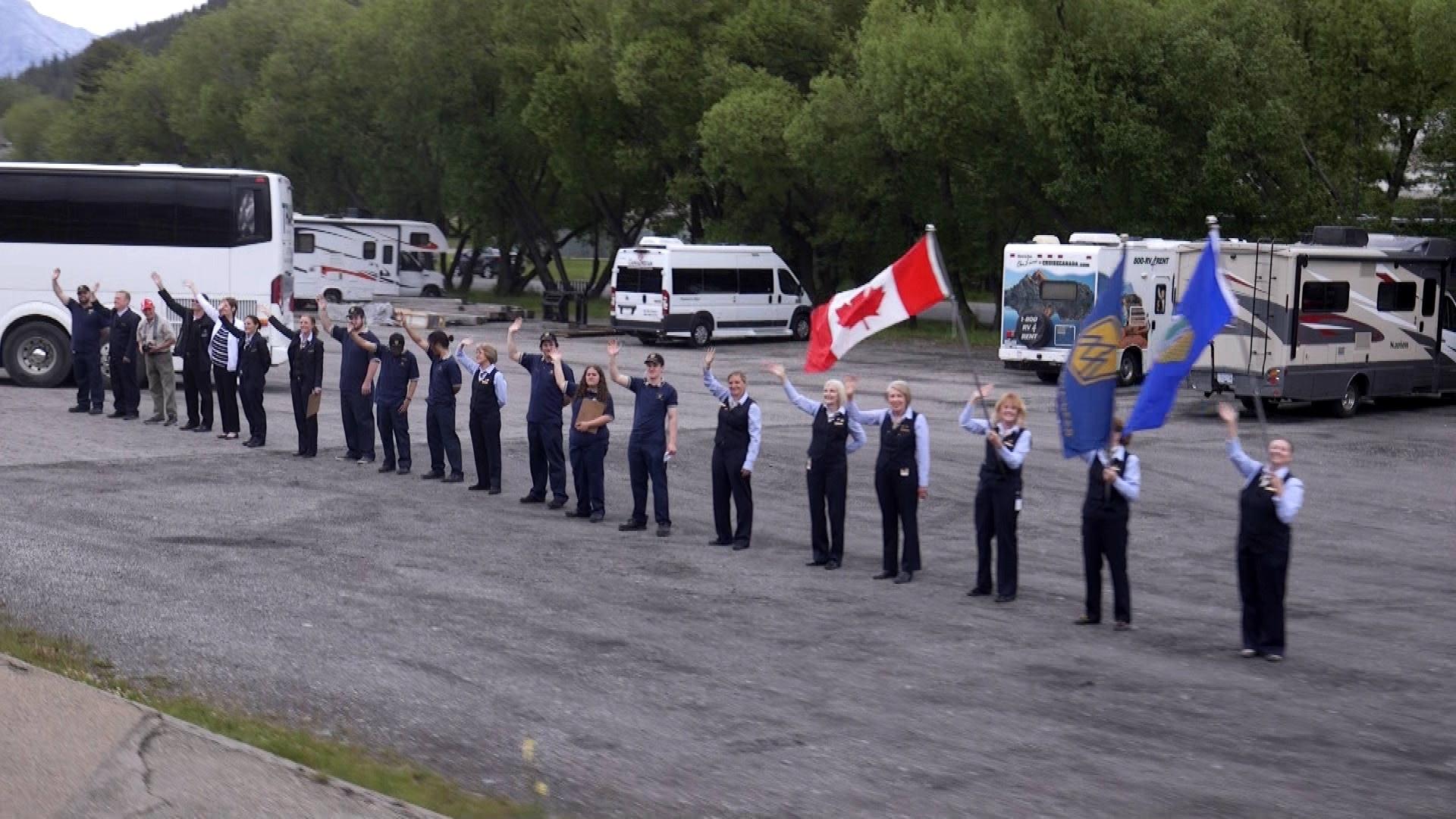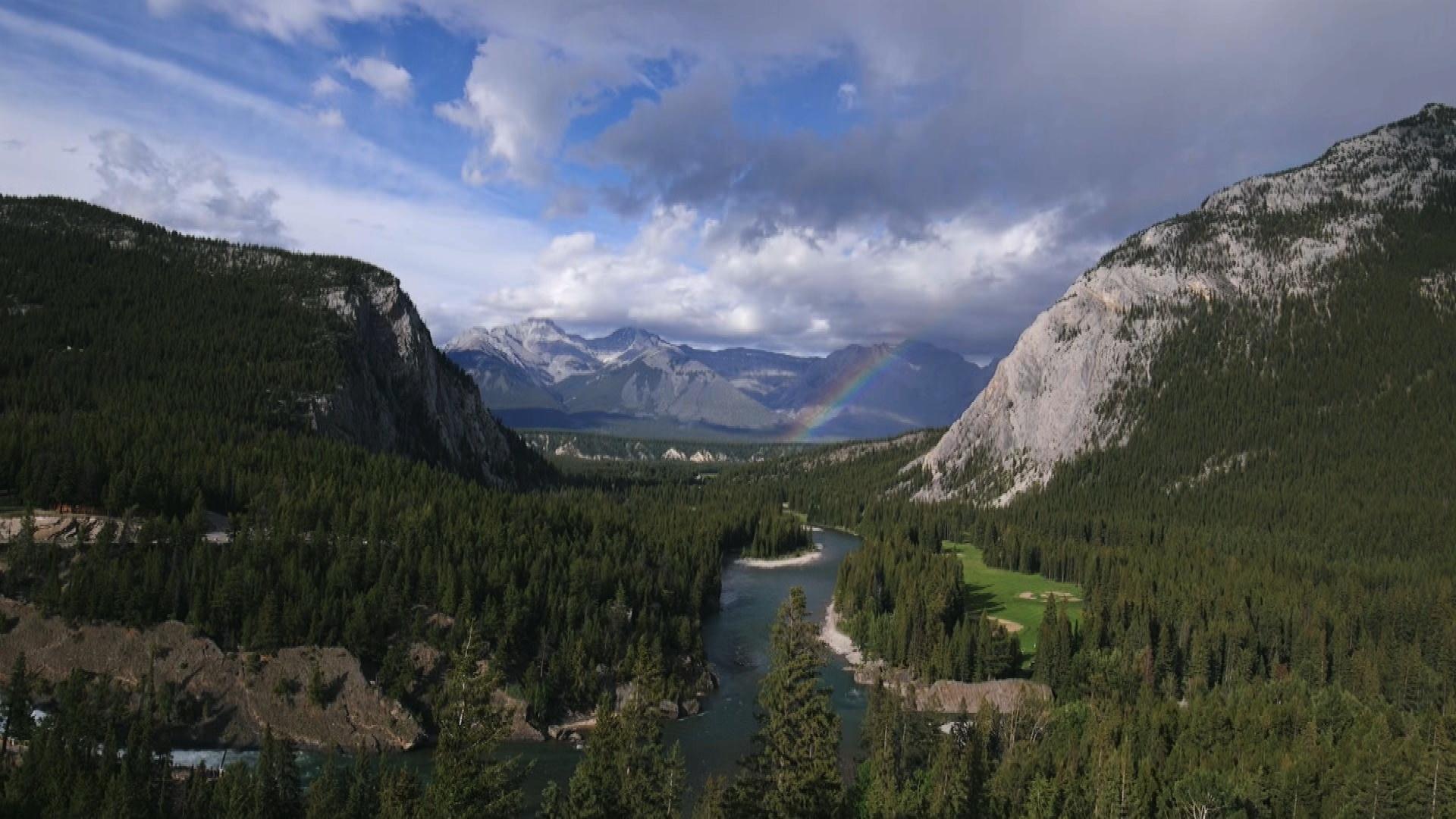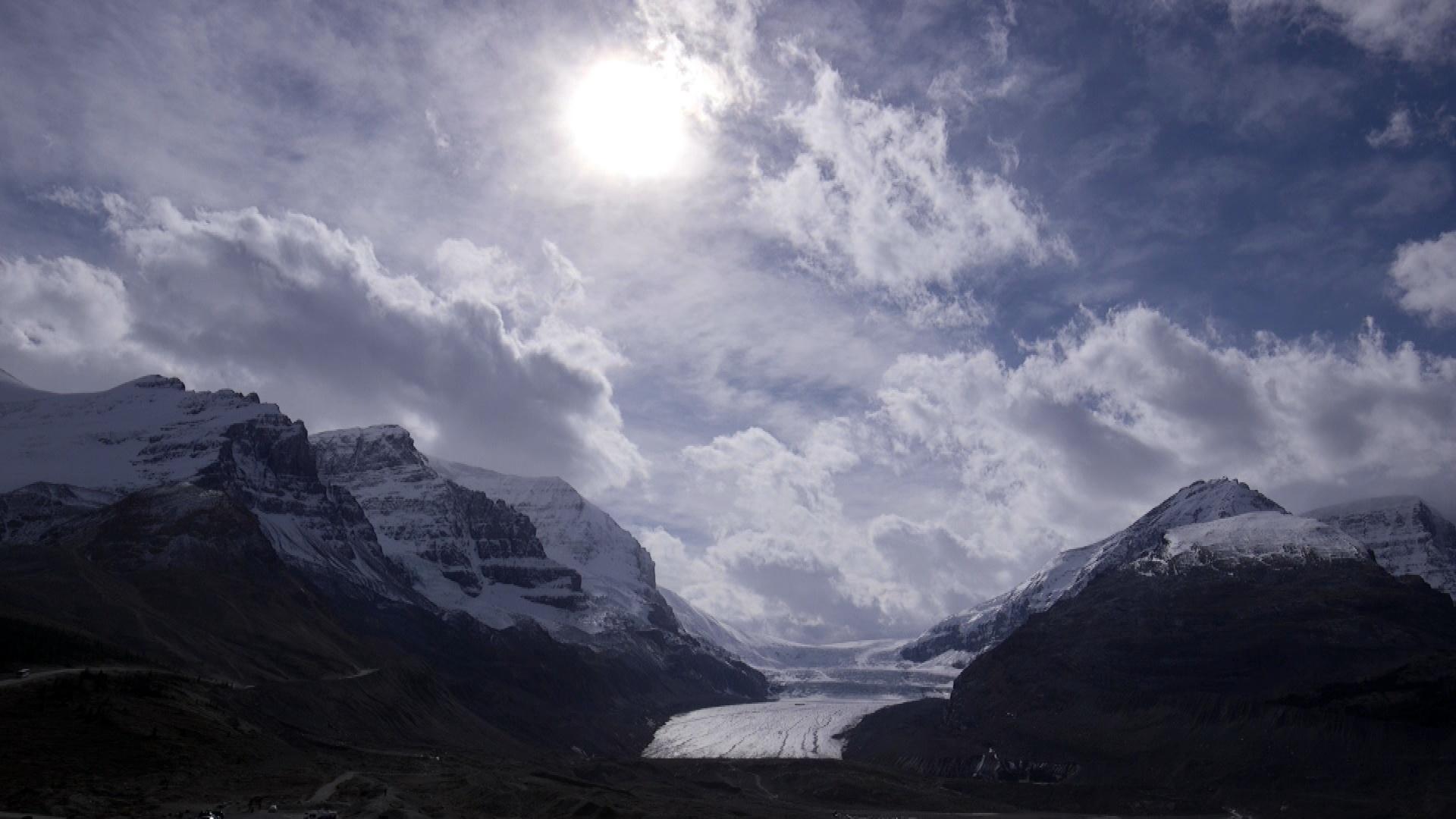
Surrounded by the Canadian Rockies in the heart of Canada's first National Park sits the mountain community of Banff.
Banff
Banff is the starting point for exploring the Canadian Rockies by car or bus. Its natural hot springs, stunning mountains and location along the transcontinental railway make it one of Canada’s most popular tourist destinations. Canada started promoting Banff’s hot springs as a tourism destination as early as 1885, a year after the former Canadian Pacific Railway president named the area after his birthplace of Banff, Scotland.To accommodate visitors to the rugged wilderness, the Canadian railway built a series of European-style hotels along the rail line. As the railroad hotels became popular tourist destinations, small mountain towns like Banff began to appear in the Canadian Rockies. The Fairmont Banff Springs Hotel was built in 1888 by Canadian Pacific Railway President William Van Horne, at which he declared was “the million dollar view.” Originally a wooden hotel of 250 rooms, the building is now mostly stone and boasts more than 700 rooms—while still offering that “million dollar view” overlooking Bow River.
Outdoor enthusiasts will love the resort town’s hiking, biking and skiing options, with at least four ski resorts to choose from within Banff National Park.
Thirty-five miles northwest of Banff lies Lake Louise, the spectacular lake bordered by the natural wonder of the Victoria Glacier and the Fairmont Chateau Lake Louise, another historic railroad hotel and architectural beauty. The lake was named Lake of the Little Fishes by the Stoney Nakota First Nations people before being renamed after Princess Louise Caroline Alberta, the fourth daughter of Queen Victoria. Visitors enjoy stunning views from the plentiful hiking trails Lake Louise has to offer.
Lake Louise serves as a gateway to the Icefields Parkway, which links Lake Louise with Jasper, Alberta. The magnificent parkway is a 143-mile long, two-lane road that allows visitors to literally drive through the Canadian Rockies. The scenic drive, rated of the best in the world by Conde Nast Traveller, offers visitors a closeness to mountain scenery, glacier and waterfalls that reach the edge of the roadway.
The Columbia Icefield is visible from the Icefields Parkway. It is a remnant of the ice mass that once covered most of the area. Athabasca is one of several glaciers that flow from the immense icefield and is the most visited glacier in North America. Visitors get onto the glacier in specially designed oversized vehicles,where they can have a sip of fresh, pristine water flowing right from the glacier.
As the Icefields Parkway crosses from Banff National Park into Jasper National Park, a popular stop is Athabasca Falls, where the Athabasca River squeezes through a narrow gorge. The river falls 80 feet over a layer of hard quartzite through the softer limestone below carving the short gorge. Visitors can choose from various viewing platforms and can take the walking trail around the falls.
Banff, Lake Louise and the Icefields Parkway

1 / 21
Approaching Banff, the forestry changes, perfect Christmas trees dot the landscape dominated by the beautiful mountains.

2 / 21
The Rocky Mountaineer staff greets passengers as the train arrives in Banff.

3 / 21
Banff a quintessential mountain resort community.

4 / 21
Surrounded by wilderness, Banff's downtown core is filled with an abundance of shops, galleries, pubs and restaurants.

5 / 21
Tourist enjoy a photo opportunity with retired Mountie Pat Kamenka who serves as an ambassador for Banff and the Canadian Rockies.

6 / 21
Outdoor enthusiasts have so many choices, from kayaking, hiking and biking in the summer to skiing, snowboarding, exploring and snowshoeing in winter.

7 / 21
The luxurious Fairmont Banff Springs Hotel was built in 1888 by Canadian Pacific Railway President William Van Horne, at which he declared was “the million dollar view.”

8 / 21
The hotel got its namesake from the natural hot springs that were discovered in the area in the 1880's.

9 / 21
The mostly stone structure with more than 700 rooms still offers visitors that "million dollar view" overlooking the Bow River.

10 / 21
Banff is the starting point for exploring the Canadian Rockies by car or bus.

11 / 21
Thirty-five miles northwest of Banff lies Lake Louise, the spectacular lake bordered by the natural wonder of the Victoria Glacier and the Fairmont Chateau Lake Louise.

12 / 21
The runoff from the Victoria Glacier gives the water a beautiful turquoise color.

13 / 21
What could be more Canadian than exploring Lake Louise by canoe?

14 / 21
The magnificent Icefields Parkway is a 143-mile long, two-lane road that allows visitors to literally drive through the Canadian Rockies.

15 / 21
The Columbia Icefields is a surviving remnant of the thick ice mass that once mantled most of Western Canada's mountains.

16 / 21
Visitors get onto the glacier in specially designed over-sized vehicles, or snow coaches which travel over the steep grades, snow and ice.

17 / 21
Dating back 11,000 years to the last Ice Age, Athabasca is one of several glaciers that flow from the immense Columbia Icefields.

18 / 21
For those who are lucky enough to make it to the glacier's edge have the opportunity to taste fresh, pristine glacial water.

19 / 21
The Athabasca Glacier is approximately 3.7 miles long, covers an area of 2.3 square feet and is measured between 300-980 feet thick.

20 / 21
Another poular stop along the journey along the Icefields Parkway is Athabasca Falls, where the Athabasca River squeezes through a narrow gorge.

21 / 21
Mountains near Jasper.
